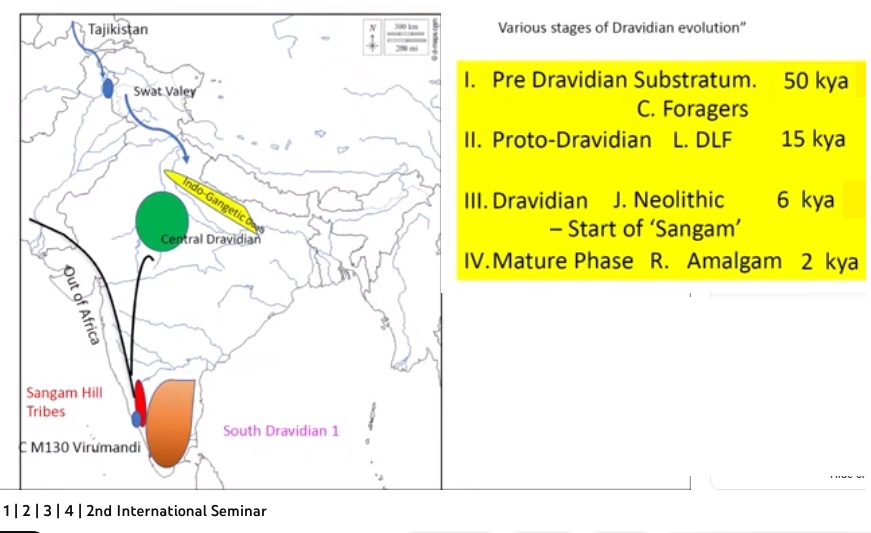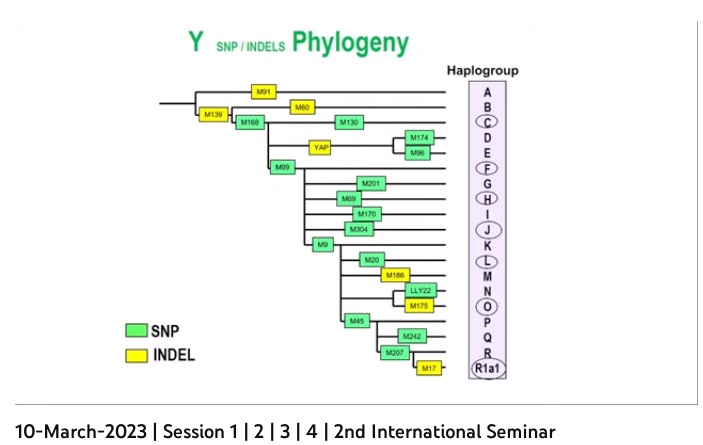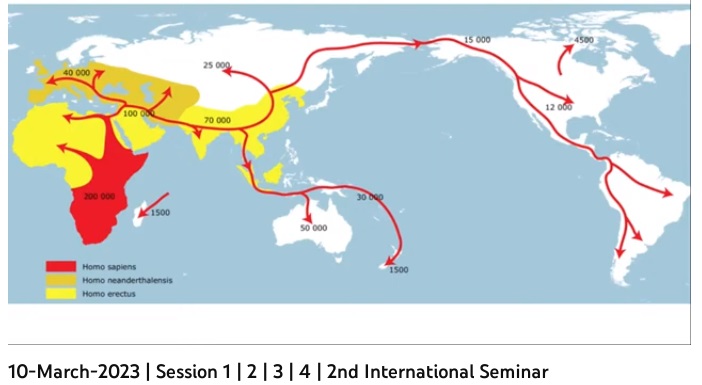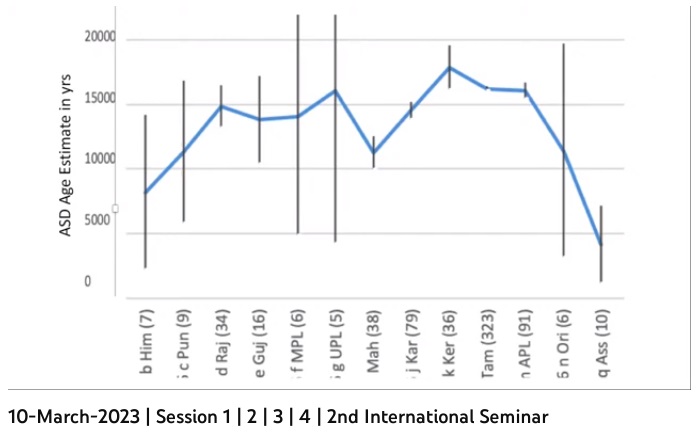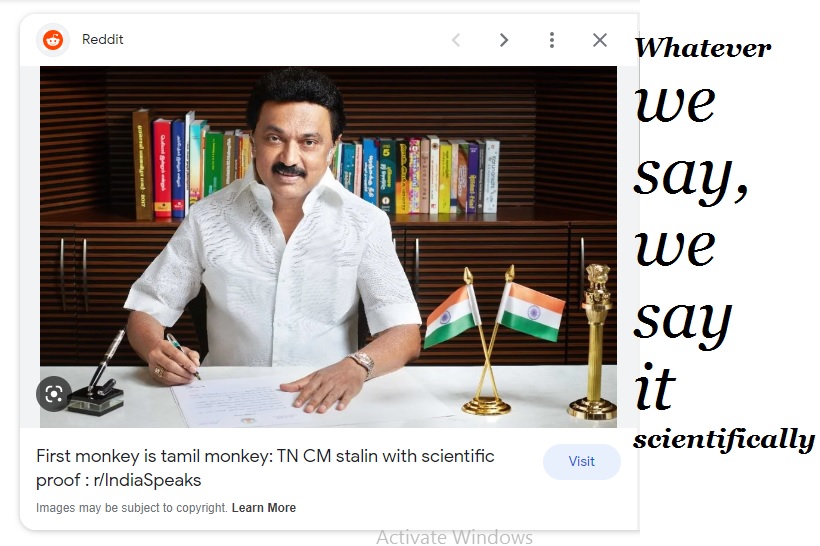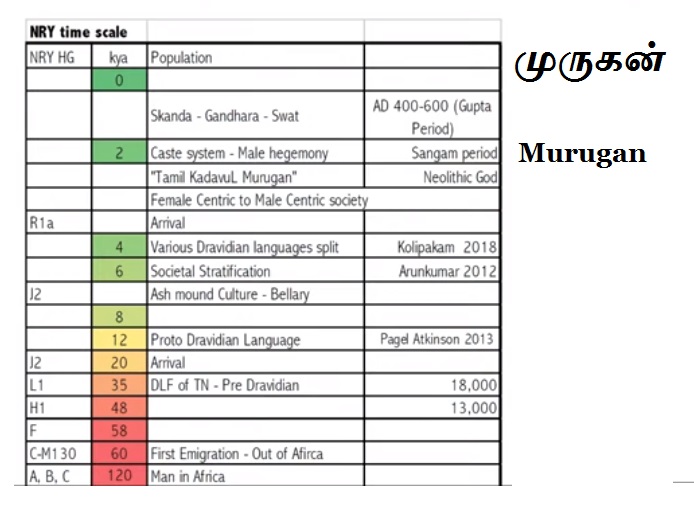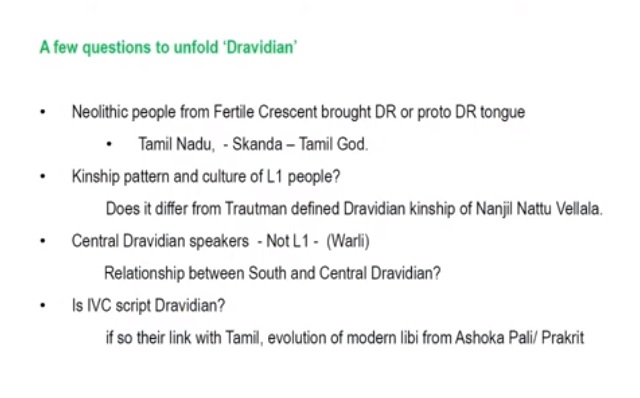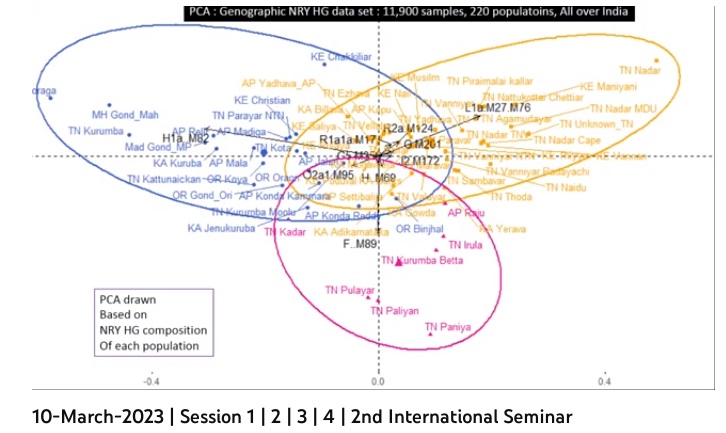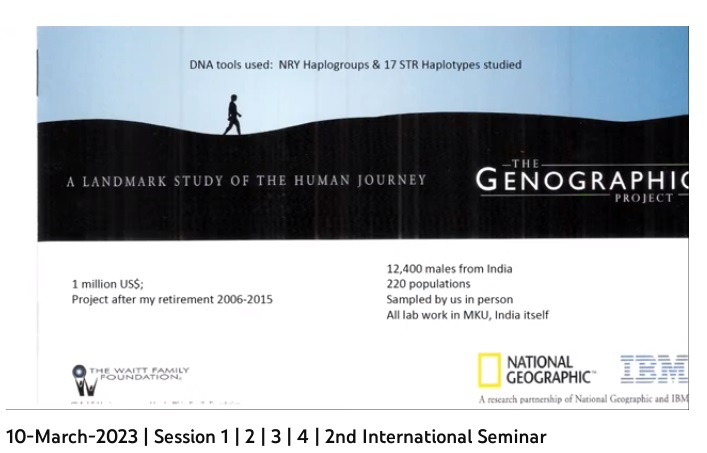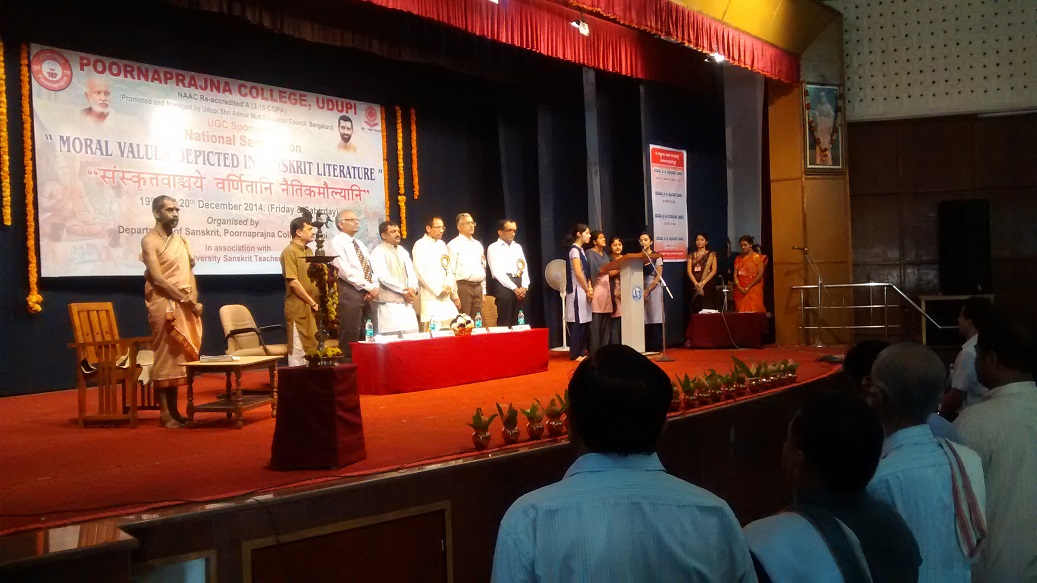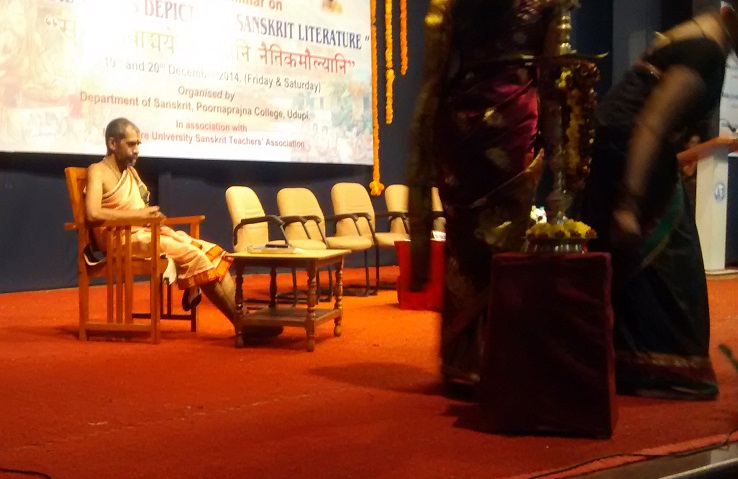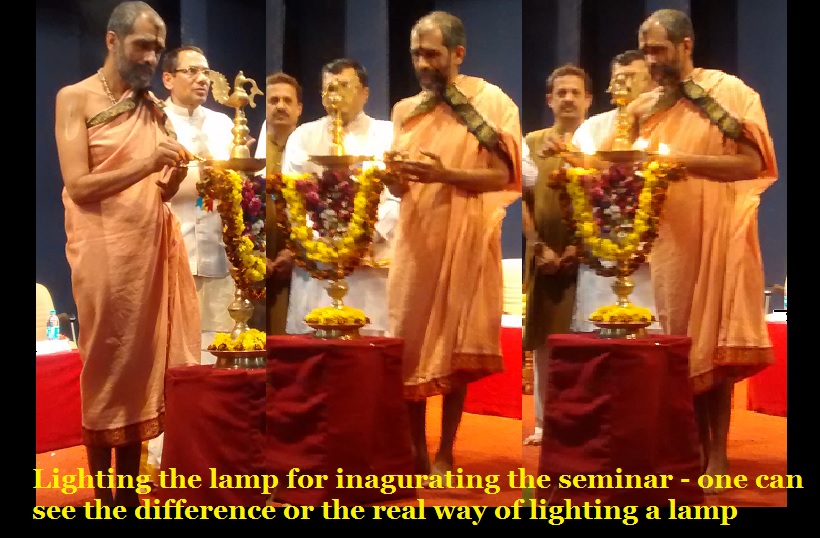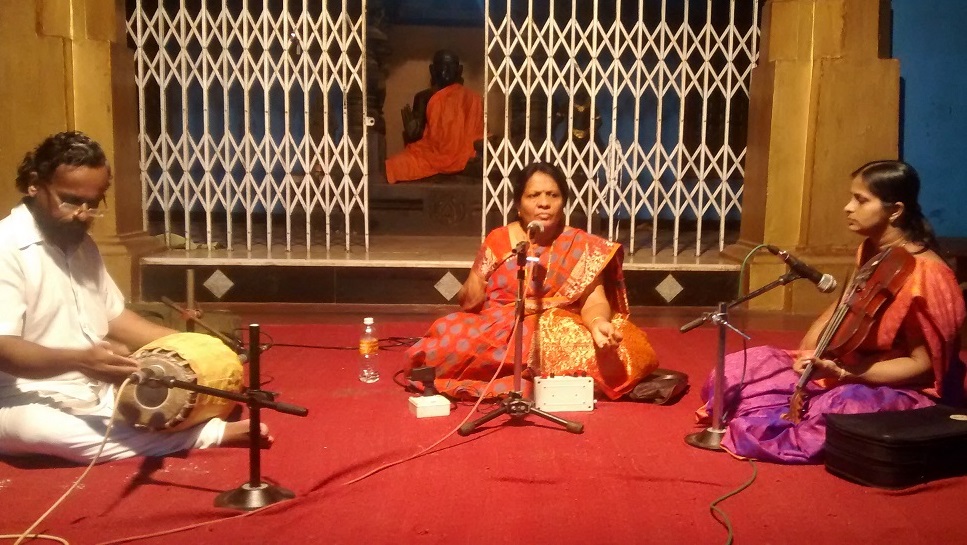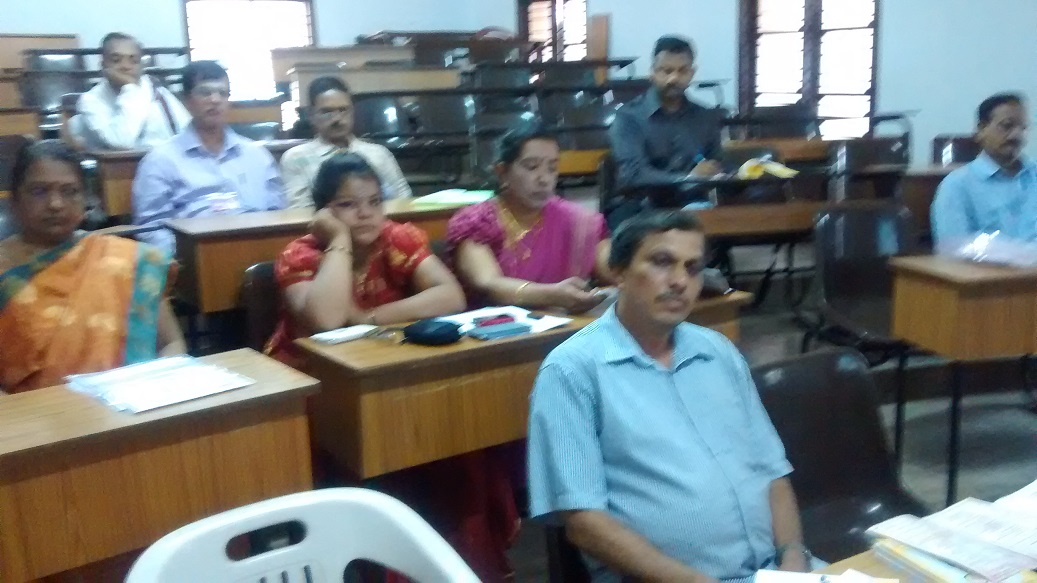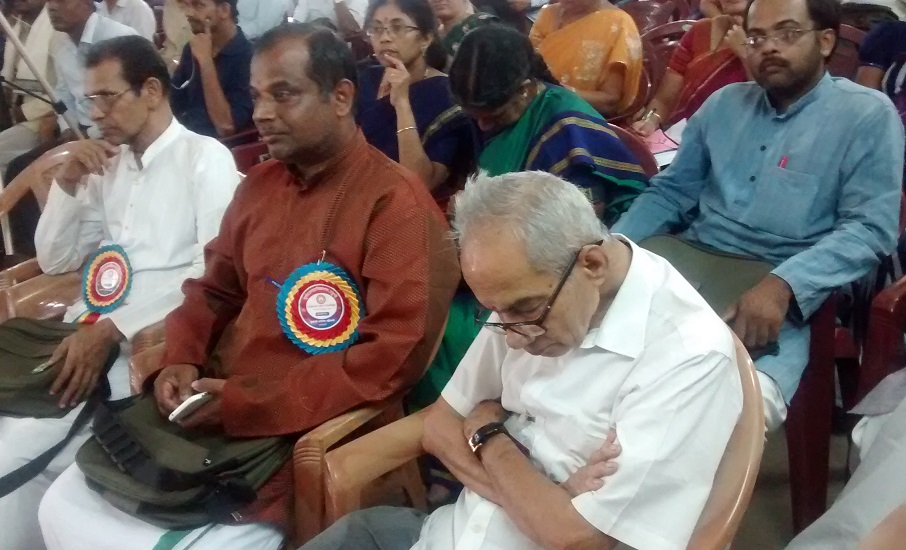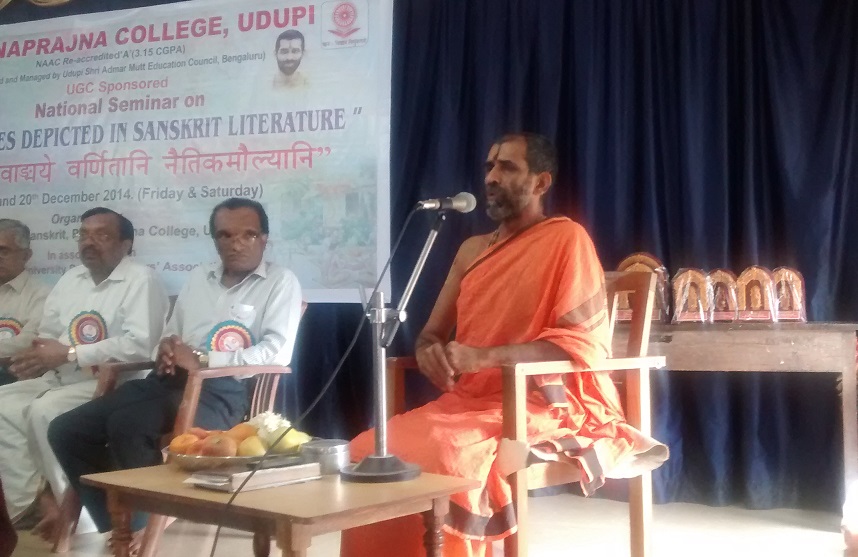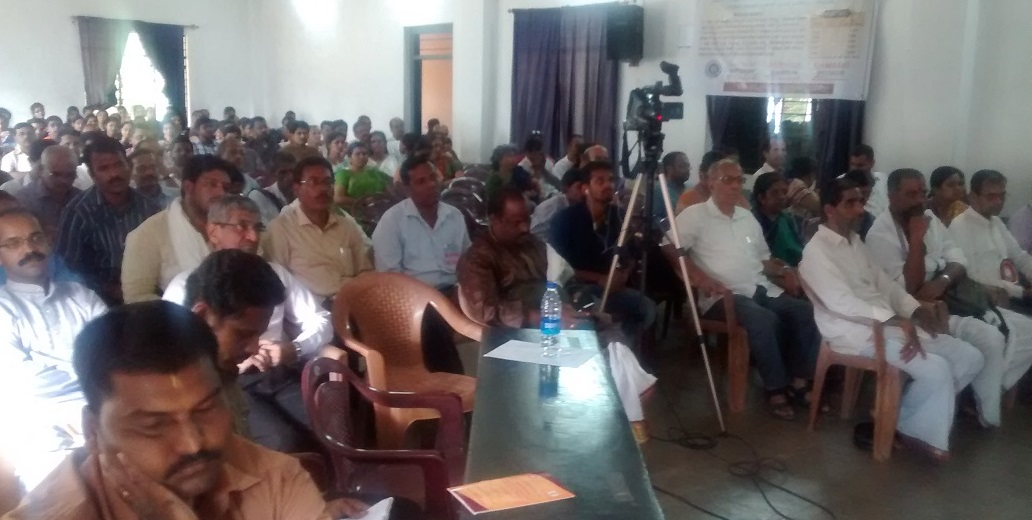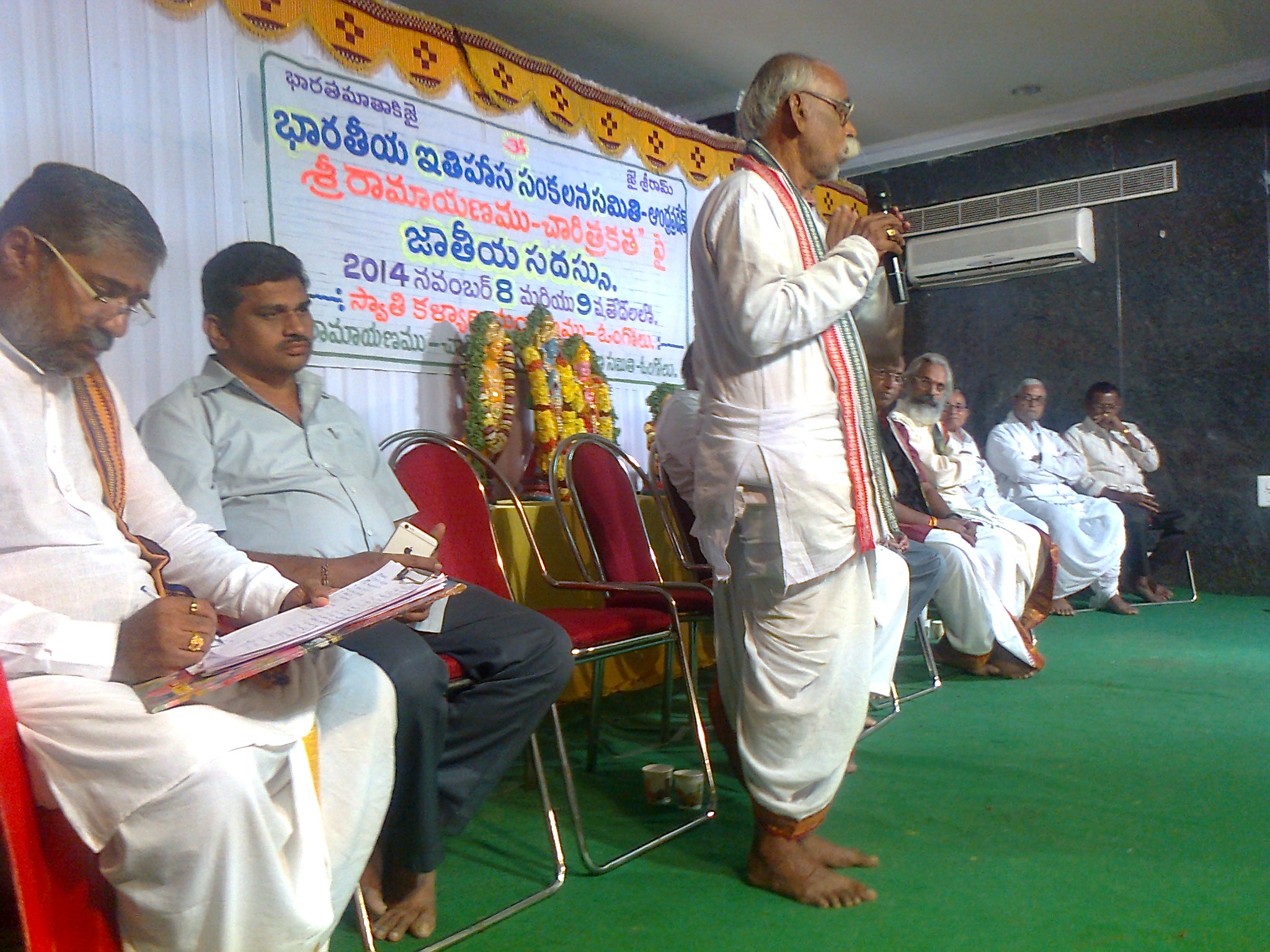National seminar on “Minor Deities in Indian Art,” held at the C. P. Ramaswami Aiyar Institute of Indological Research, Chennai on March 28th and 29th 2024 (1).

C. P. Ramswami Aiyar Institute of Indological Research: C. P. Ramswami Aiyar Institute of Indological Research (CPRIIR) have been regularly conducting conferences and seminars on the important topics connected with Indology[1]. They also bring out a journal, “The Journal of Indian History and Culture” regularly[2]. Some of the journals can be downloaded from here[3]. They have also brought out many books during the course of time. It is also affiliated to the University of Madras for doing PhD. Now, they organized a seminar focused on “Minor Deities in Indian Art,” on March 28th and 29th 2024 at their premises, Eladams Road, Chennai. Their circular gave the details of the seminar, theme etc as follows.

Seminar on the “minor deities”: Indian art and culture have been profoundly influenced by a multitude of deities, each with its own unique attributes, symbolism, and significance. While major deities like Vishnu, Shiva, and Devi have received extensive attention in both art and scholarship, there exists a rich tradition of minor deities that play vital roles in Indian religious and artistic traditions. These minor deities, often associated with specific regions, communities and narratives, have their own captivating stories and iconographic representations. In the ancient world, the veneration of natural powers was embodied by deities, both male and female, held prominence. The examination of archaic sources and archaeological remains has unveiled compelling evidence of reverence for nature manifesting through trees and animals and the symbolic significance of sacred symbols. Minor deities encompass a wide spectrum of beings, including local deities, demi-gods, guardian spirits and divine attendants. They represent the plurality and syncretism of Indian religious traditions, with each region and community often having its own set of minor deities.

“Minor deities” – related issues: Minor deities in Indian art are characterized by unique iconographic features and symbolism. Their depiction in sculpture, painting and other artistic forms reveal intricate details of specific attributes and narratives. These symbols and attributes serve as a visual language that conveys the deity’s role, personality and significance. Some examples of minor deities include the Ashtadikpalakas, Navagrahas, 12 Adityas as well as lesser-known forms of the main gods, such as Shastha, forms of Devi and the avataras of Vishnu, demi-gods in Buddhism and Jainism. This seminar aims to delve into the less-explored world of minor deities in Indian art, providing a platform for researchers to share insights into their iconography, mythology and regional significance.The seminar will encompass a wide range of themes related to minor deities in Indian art, including, but not limited to –
- Iconography and Symbolism of Minor Deities
- Regional Variations in Depictions
- Minor Deities in Hinduism, Buddhism and Jainism
- Minor Deities in Folk and Tribal Art
- Rituals and Worship of Lesser-Known Deities
- Literary Sources on Minor Deities
The proceedings of the seminar would be published to serve as a valuable resource for researchers and enthusiasts interested in the study of minor deities in Indian Art. Additionally, it would foster collaborations among scholars and institutions for future research endeavours in this field.
About the papers: The CPRIIR invited scholars and academics to submit their abstracts of research papers on or before February 25, 2024 emphasizing that the abstracts should be in English and within 500 words in Times New Roman font, 12 point. It should include the title of the paper, name of the author, institutional affiliation, e-mail address and five keywords. A short bio-data of the author (s), not exceeding half a typed page, should be sent along with the abstract. The acceptance of the abstracts would be notified by February 28, 2024. The abstracts should be sent to cpriirconference@gmail.com on or before the closing date. Any other information may be obtained from the same mail address. Outstation participants are advised to make their own arrangements for accommodation. Participants should register themselves on or before March 15, 2024, as they were limiting the number of participants.



28-03-2024 – First day proceedings: On March 28th, the seminar was inaugurated by Prof Maruti Nandan Prasad Tiwari, Chairman, Indian Art History Congress, Professor Emeritus, Banaras Hindu University. With the introduction by Dr Nandita Krishna Director of the Institute and the traditional lighting of “Kuttuvilakku,” the seminar was started. Dr Nandita Krishna explained the theme of the seminar with examples of “minor deities.” Her booklet “Groves and Gods of Tamilnadu” was also circulated. In his hey-note address, Prof Tiwari talked about, “Minor deities and pacifying goddess of diseases – Shitala in Indian tradition and art” and his paper was circulated. Then, the invited speakers presented their papers.



Sitaladevi – Prof Maruti Nandan Prasad Tiwari: Prof Tiwari explained about the Sital devi and compared it with Mariamma of South India. The “Saat Sahelis”, or “Seven Sisters or Friends,” generally depicted that included Sïtalå devi. They were ˜Sïtalå, Masånï, Basanti, Mahå Mål, Polamde, Lamkanijå, and Agwanï. Elsewhere, they are ˜Sïtalå, Phulmatï, Camariyå, Durgå Kålï, Mahå Kålï, Bhadrå Kålï and Kålikå Bhavånï. The tradition of the group of seven, with minor variations in names, was thus widespread. There is one Temple at Modhera in Gujarat. Sitala is also depicted with a twelve-armed nude figure is riding on an ass. The few surviving hands have varadåkamudrå, trisula, àamaru, pitcher, and a winnowing fan in the uppermost pair of hands. The sculptors delighted in the classical shape of the dagger, with its efficient double curvature for greater lethal effect, and gutters to drain off blood. But on the other hand, the winnowing fans and brooms, never the stock-in-trade of art, have rustic forms. The literary and inscriptional evidences point to 7th and 13th centuries CE. He concluded that the iconographic features of the goddess were standardized in the 11th century and that images mostly occur with te textual prescriptions in respect of her ass mount and the distinguishing attributes, winnowing basket, sweeping broom, and water-vessel. Though, the majority goddesses Parvti, Lakshmi, Saraswati and others are there, Sitaladevi also became popular.

For illustrative purposes, these photos are added here for understanding the topic, but, not that of the author and they are available in the public domain.






Chitra Madhavan’s Satyaki[4]: Dr. Chitra Madhavan Historian and Writer, Chennai presented he paper on “Satyaki – A lesser known deity.” The Parthasarathi Svami temple in Thiruvallikeni is one of the 108 Divya Desams, praised in the Tamil verses (Pasuram) of the Azhvars or Vaishnava saints. Pey Azhvar, Thirumazhisai Azhvar and Thirumangai Azhvar have sung about the deities enshrined inside the temple complex. It is the processional image (utsava-murti), known as Parthasarathi, from whom the temple takes its name.This east-facing deity is thus called as he is Krishna the charioteer (Sarathy) of Partha (Arjuna). The marks on his face are believed to be caused by arrows shot by the Kauravas having pierced this weaponless charioteer in the Kurukshetra war. The main image on the east side, seen with a white moustache, is worshipped as Venkatakrishnan. This two-armed deity holds the conch (Sankha) but the discus (Chakra) is not seen which is rather rare in a Vishnu image. This is because Krishna did not use weapons in this war. Inside this sanctum are five more deities namely goddess Rukmini, Krishna’s consort; Sankarshana (Balarama), Pradyumna (Krishna’s son), Aniruddha (Krishna’s grandson) and Satyaki (also called Yuyudhana, a warrior and Krishna’s friend)[5]. Yoga Narasimha, facing west, is also a main deity with a flag-post (dvajastambha) in front, just like Venkatakrishnan[6].

Satyaki in the Literature: Yuyudhana (युयुधान), better known as Satyaki (सात्यकि), was a powerful Yadava chieftain of Narayani Sena, belonging to the Vrishni clan to which Krishna also belonged. According to the Puranas, he was the grandson of Shini of the Vrishni clan, and son of Satyaka, after whom he was named. A valiant warrior, Satyaki was devoted to Krishna and was a student of Arjuna. Satyaki strongly and passionately favors the cause of the Pandavas over the Kauravas in the Kurukshetra War. Prior to the war, Satyaki accompanied Krishna to the Kuru capital, with Krishna as the Pandavas’ emissary of peace. He is a witness to Duryodhana’s attempt to arrest Krishna and Krishna’s Vishwaroopa form, though he is not mentioned as one of the few persons not blinded by the apparition. After talks break down, Satyaki leads the Sivi and Vrishni army to the Pandava’s camp. While Satyaki, along with others like Chekitana and Syenajita joins the Pandavas, Krishna promises his army to Duryodhana. Hence, Yadavas sworn directly to Dwarka like Kritvarma fight for the Kauravas, meaning Satyaki has to fight his kinsmen in the war. He provides 1 Akshauhini army to the Pandavas. During the war, Satyaki is the commander of one akshauhini of the Pandava army. According to Bhishma, he is capable of fighting 12 Atirathis alone. After the Kurukshetra war, Gandhari curses Krishna that his clan will be destroyed 36 years later in a fratricidal massacre. Accordingly, the Dwaraka clans fought with each other and killed themselves.

There is a sculpture suggesting how Satyaki protected the Pandavas, when Aswathama wanted to kill the Pandavas by sleeping at the camp of the enemies…

R.K.K. Rajarajan’s “Rare Forms of Gaṇapati”[7]: Next, Dr. R.K.K. Rajarajan Assistant Professor in Fine Arts, Gandhigram Rural University delved upon, “Rare Forms of Gaṇapati – With Reference to Notes in Tamil ‘Bhakti’ Literature.” Mainly, he relied upon the Tamils of Tamilnadu of even recent day manipulations and tried to show how Ganapati had attracted the Tamilnadu sculptors to accommodate different form in the gopurams, side-wall depictions and wooden chariots / rathas. Treating the origin of “Pillaiyar” (whose child), he brought it under two streams northern Sanskritic and Southern Tamil. He relies upon Asko Parpola for pointing out that the name Pillaiyar finds its root in the Central Dravidian languages of the Proto-Dravidian family. With later day and recent sculptures, he links Ganapati with Vyasa, Parasurama[8], Vygapada etc., obviously with chronological itch. Moreover, these stories were spun just 100-200 years back and have been lesser than mythologies. In newly constructed temples, the modern sculptures go on add such sculptures, just for present popularity or as per the wishes of some devotees. The illustrative sculptures taken have to be given their dates to compare such depictions are available in the Sanskrit or Tamil literature. When Upanishad mentions about the roots of Ganapati, then, antiquity has to be decided accordingly.




Technical Paper reading session: After lunch, the paper reading session started with the paper reading proceedings. The first technical session was headed by Prof. Choodamani Nandagopal, Art historian, UNESCO Fellow and Tagore National Fellow, Bengaluru. For presentation of papers, 15 minutes time was given. The following papers were presented:
- Dr. J. Soundararajan & Mr. K. V. Ramakrishna Rao – “The precept, concept and evolution of “Minor Deities” in India”
- Mrs. R. Ramya[9] – “Devmogra – Goddess of worship for Satpuda Tribal people”
- Dr. Amrita Chakraborty – “Dikpālas: Eastern Indian Variations”
- Dr. Ramadevi Sekhar[10] – “Guardian of the Skies: Garuda’s Multifaceted Presence in Texts and Practices”
The Technical Session – II was held at the Main Hall in Parallel chaired by Dr. Chitra Madhavan, Historian and Writer, Chennai and the following papers were presented:
- Mr. K. Sridharan[11] – “Annapurani and Annamurti in Art and Temple Rituals”
- Dr. Parthiban Rajukalidoss[12] – “Lord of five houses in the hamlet of ten scarlet ixora: syncretism of a folk deity and its temple in Ceṭṭiyapattu, Uṭaṉkuṭi”
- Dr. S.P. Prem Singh Muthubalan – “Mythology of Isakki Amman Worship in Southern Tamilnadu”
- Dr. P.C. Muralidharan – “Worship of deities Garuḍa and Sudarśana as enunciated in Śeṣasamhitā”
© K. V. Ramakrishna Rao
30-03-2024.
[1] About the Institute- https://cprfoundation.org/CPRIIR pamphlet-2023.pdf
[2] About the Journal – https://cprfoundation.org/CPRIIR.html
[3] Journal of Indian History and Culture (JIHC)
- Listed in UGC – CARE (ISSN: 0975-7805) –https://cprfoundation.org/modify_new2022.png ; https://journalcpriir.com/previous-issues/
[4] Abstracts, sl.no.1; p.7.
[5] Indian Express, A Vishnu temple, unique in more ways than one, Chithra Madhavan,Updated on: 08 Feb 2017, 11:15 am.
[6] https://www.newindianexpress.com/chennai/2017/Feb/07/a-vishnu-temple-unique-in-more-ways-than-one-1568080.html
[7] Abstracts, sl.no.6; pp.14-15
[8] Reportedly Brahmanda Purana, it is evident that this myth resembles, Dhakshayini / Parvati story and thence, created later period, may be during medieval peiod,
[9] Abstracts, sl.no. 24; p.41
[10] Abstracts, sl.no. 23; p.39
[11] Abstracts, sl.no. 28; p.45.
[12] Abstracts, sl.no. 20; p.36.
Filed under: 12000 years of Indian culture, A case for India, academic, academicia, accounts, agrarian, agriculture, Ambika, Anjaneya, anthropology, anti-vedic, antique, antiquity, archaeological remains, archaeological sites, archaeological survey of India, archaeology, Art and Culture of Tamil Nadu, artefact, artifact, arya, asterism, astronomy, atheistic, Brahmi, broken head, broken parts, broken pillar, bronze age, Buddhist, chanda, cosmogony, cosmology, Dravidian, Durga, figurine, fish, geo-archaeology, geoarchaeology, geometry, gita, God, goddess, idol, indology, majority deity, middle deity, minor deities, minor deities in indian art, minor deity, minor god, minor goddess, minority deity, Ramakrishna, ramayana, Sangam literature, sectarian, temple, terracotta, terracotta figurine, thanjavur, Veda, Vedas, vijayanagar, Vijayanagara, Yantra, Yogic, Yogini | Tagged: art, deity, God, goddess, history, India, ista devata, kula devata, lord, major, major deity, majority deity, middle deity, minor, minor deities, minor deities in indian art, minor deity, minority deity, parivara devata, spirituality, travel, upadevata | Leave a comment »











